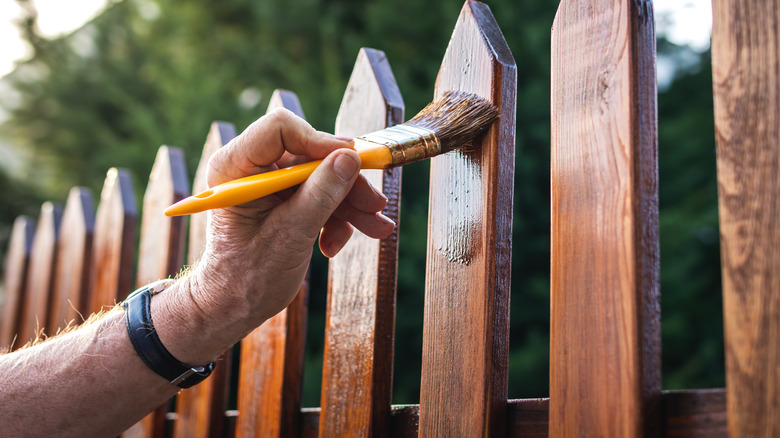Is Transparent Or Semi-Transparent Stain Better For A Wooden Fence?
For many homeowners, wooden fences serve as the main focal point of their landscape, contrasting beautifully with the greenery. However, what really helps them stand out is their unique wood finishing, adding to their aesthetic appeal. Visual aspects aside, wood stains act as protective coatings, shielding your timber from adverse environmental forces, such as ultraviolet (UV) rays, moisture, and frost. This means that choosing the right finish is essential. However, the choice greatly depends on your fence's condition and personal preferences.
Wood stains have various opacity levels, with transparent and semi-transparent finishes being more popular, as you can still view the grain's original texture and color, which isn't possible for solid stains. However, the natural reflection differs vastly for the two stains. The transparent finish offers more clarity but offers little blemish coverage, making it ideal for new, untouched wood. Semi-transparent stains add more pigment to the timber, which provides better coverage for relatively older, battered fences.
When a transparent stain is appropriate
Transparent stains are clear wood finishes that don't add much to a wooden fence's color. This enables the wood's natural grain to shine through, giving the wood a more rustic look. Clear stains pair well with beautifully colored and richly textured woods, like cedar, which feature grains that already have great curb appeal. However, tinted transparent stains are also available, which can add a slight woody accent to your fence.
While high transparency is great for showcasing the timber's natural beauty, it provides little coverage. Thus, clear stains work better on new wood or relatively undamaged lumber without any major fissures, rot, or discoloration. Interestingly, even though a lighter finish will prevent your fence from heating up, it may be unsuitable in areas with high sun exposure because of its low UV protection.
However, being high on sealant, transparent stains extends decent protection against water. Moreover, if you've got little time to look after your fence, clear stains will do the job. Their application involves little prep time and usually entails a couple of coats, which isn't very time-consuming. If need be, you can always refinish your fence with a darker stain.
When a semi-transparent stain works better
Semi-transparent or translucent stains have higher pigmentation levels than transparent stains. While they still allow the timber's texture to show through, they also reflect woody red and coffee tinges. The additional color coverage hides away the fence's blemishes and signs of wear and tear — albeit to a limited extent, lending it a more uniform look. This property makes semi-transparent stains a good fit for dull, weathered wood fences with a few cracks and splits.
Moreover, translucent stains offer higher protection against natural elements, including UV rays and rain damage, vis-à-vis transparent stains. This makes them ideal for the more exposed, weather-beaten fences. Some stains also offer immunity against fungal and algae infection. Also, they're relatively more durable, lowering your refinishing workload to once every two to three years. However, semi-transparent stain application entails additional work, like sanding, to prepare the surface for better absorption. Be sure you're up for the added labor time. Further, they may not work for painted fences.


